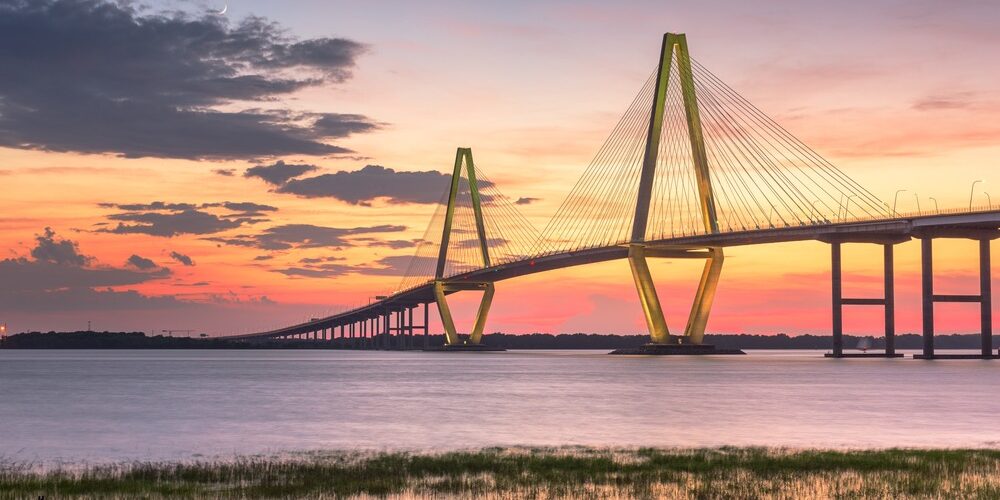The United States boasts a remarkable collection of iconic bridges, each representing a feat of engineering, a connection between communities, and a symbol of regional identity. From coast to coast, these structures captivate with their design, history, and cultural significance.
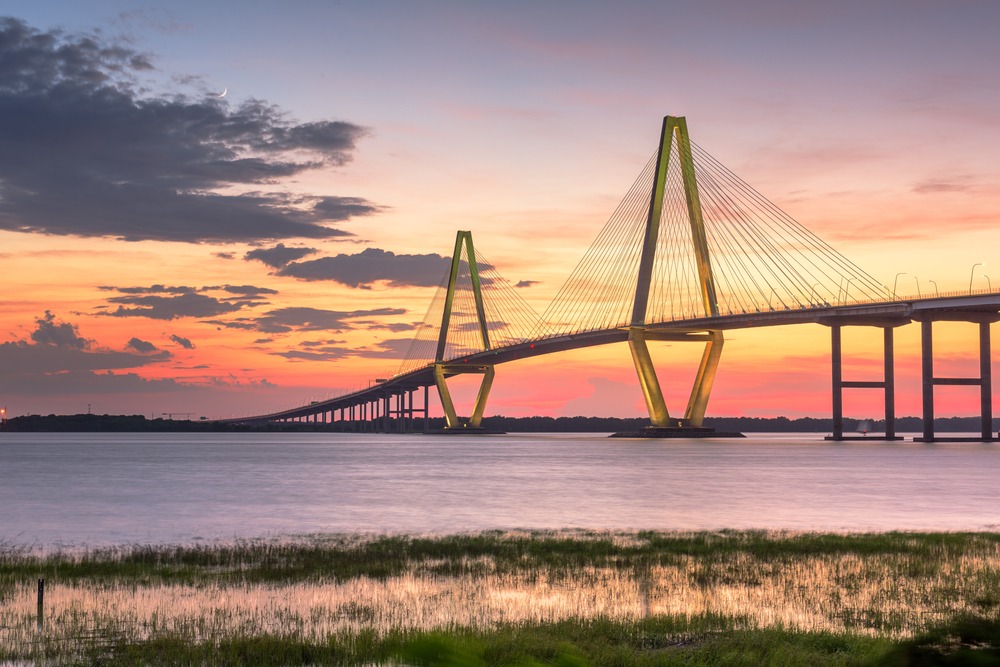
The Arthur Ravenel Jr. Bridge in Charleston, South Carolina, completed in 2005, is a marvel of modern engineering. This cable-stayed bridge spans the Cooper River, linking downtown Charleston with Mount Pleasant. Its twin diamond-shaped towers rise prominently over Charleston Harbor, and the bridge serves not only as a critical transportation link but also as a recreational space, with a pedestrian and cycling path offering panoramic views of the city and its historic harbor.
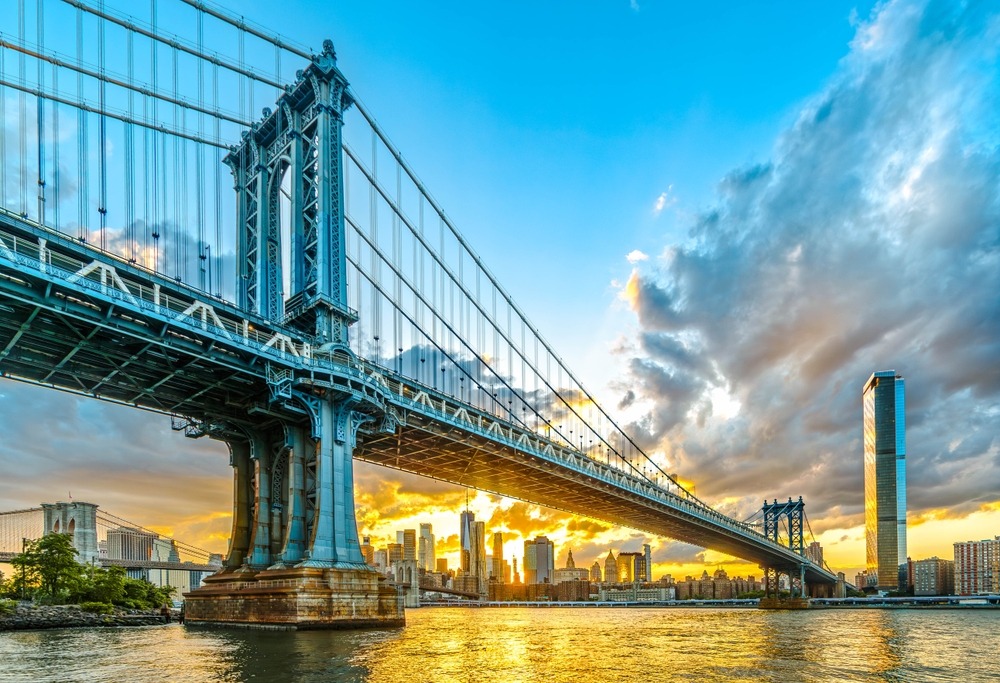
The Brooklyn Bridge in New York City is one of the most iconic structures in America. Completed in 1883, this hybrid cable-stayed and suspension bridge was the first to use steel-wire cables. Connecting Manhattan and Brooklyn across the East River, the bridge was a groundbreaking achievement at its inception and remains an enduring symbol of New York’s ingenuity. Its stone towers, designed in a Gothic style, and its scenic promenade continue to attract millions of visitors annually.

The Golden Gate Bridge in San Francisco is celebrated worldwide for its beauty and innovation. Opened in 1937, this suspension bridge connects San Francisco to Marin County across the Golden Gate Strait. Its International Orange color, chosen for visibility in the frequent fog, has become an iconic element of the city’s identity. Spanning 1.7 miles, it remains a masterpiece of design and a must-visit landmark for travelers.

The Seven Mile Bridge in the Florida Keys is a breathtaking feat of construction. Built in 1982, it stretches across turquoise waters from Knight’s Key to Little Duck Key. This modern structure replaced an older version constructed as part of the Overseas Railroad, which was later converted for vehicular use. Traversing this bridge provides a unique experience, surrounded by the shimmering Atlantic Ocean and Gulf of Mexico.
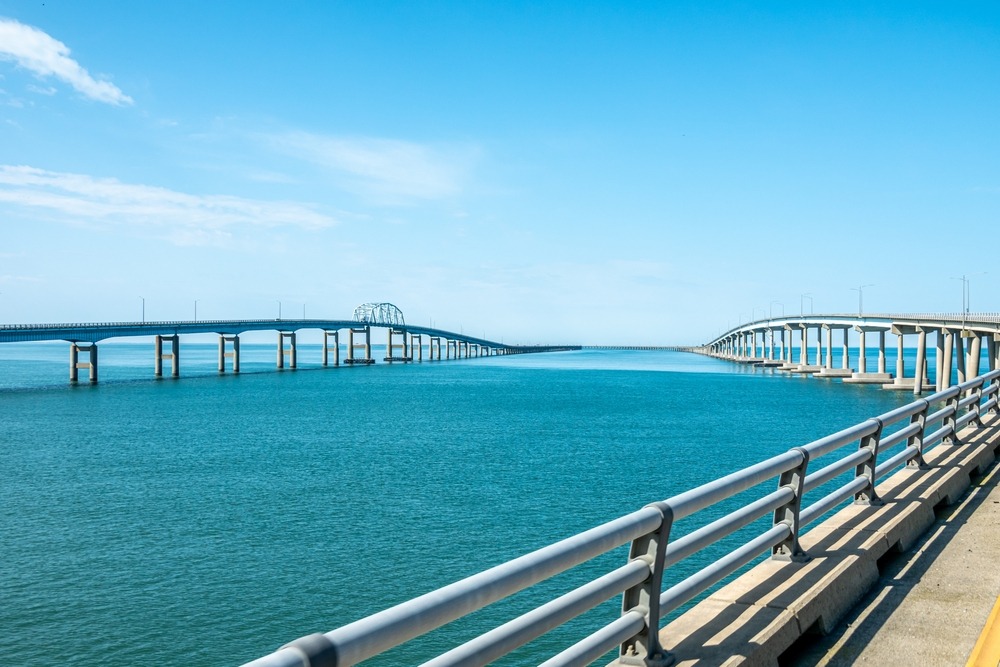
The Chesapeake Bay Bridge-Tunnel, completed in 1964, is both an engineering wonder and a crucial connection for travelers. Spanning over 17 miles across the Chesapeake Bay, it links Virginia Beach to the Delmarva Peninsula. The structure alternates between bridges and tunnels, allowing maritime traffic to pass uninterrupted. Its design is not only practical but visually striking, offering dramatic views of the bay.
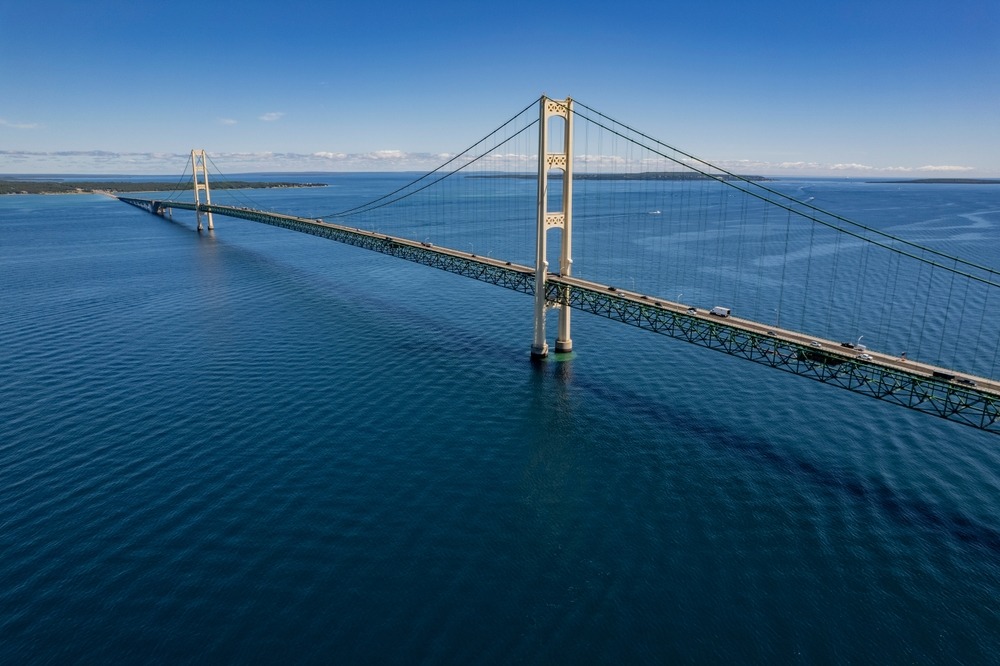
The Mackinac Bridge, connecting Michigan’s Upper and Lower Peninsulas, spans five miles across the Straits of Mackinac. Completed in 1957, it was then the longest suspension bridge in the world. Its deck is designed to flex in high winds, reflecting the engineering needed to withstand harsh Great Lakes weather. Known locally as “Big Mac,” it remains a cherished symbol of Michigan.
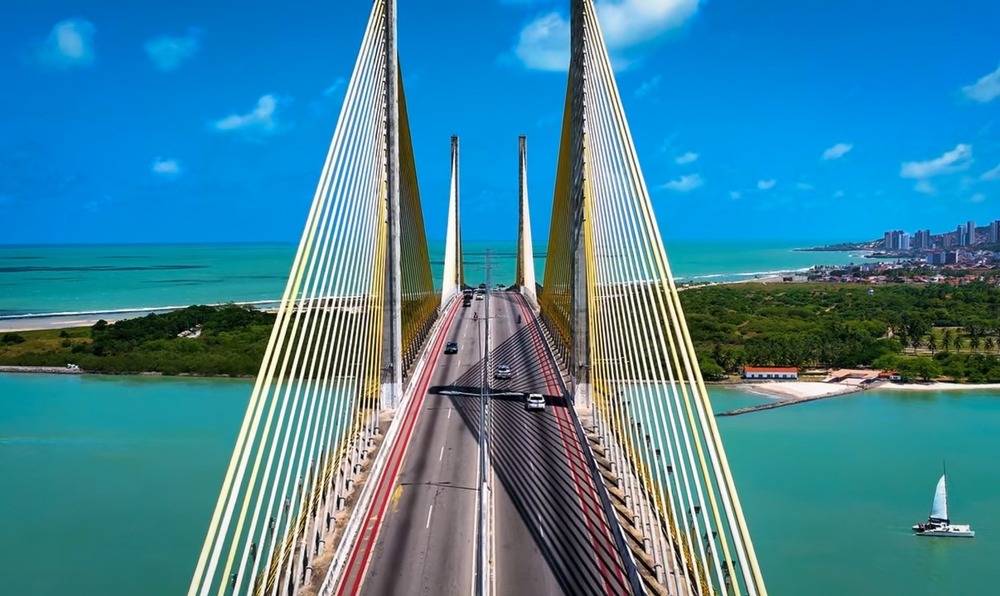
The Sunshine Skyway Bridge in Florida, completed in 1987, is a cable-stayed bridge spanning Tampa Bay. It replaced an earlier structure destroyed in a ship collision. Its iconic yellow cables resemble sunbeams, embodying Florida’s sunny reputation. With sweeping views of the bay, the bridge is a visual and functional highlight of the area.
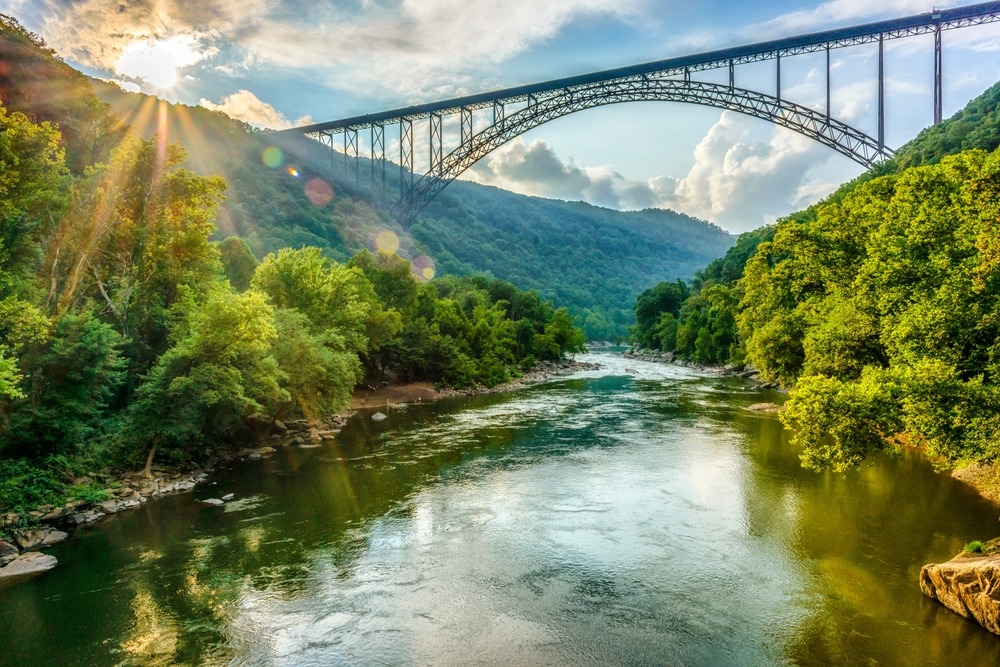
The New River Gorge Bridge in West Virginia, completed in 1977, is one of the longest single-arch steel spans in the world. Stretching 3,030 feet across the New River Gorge, it provides a vital link for transportation while offering breathtaking views of the surrounding Appalachian Mountains. Its annual Bridge Day event, where visitors can walk across and even base jump from the bridge, is a regional tradition.
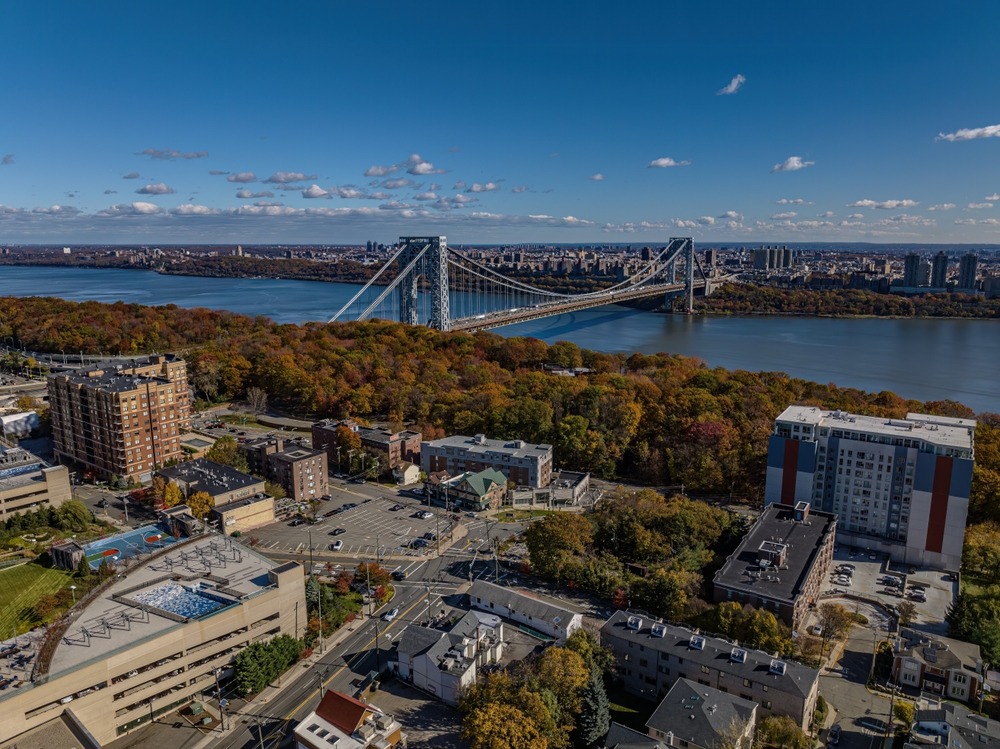
The George Washington Bridge, connecting Manhattan and Fort Lee, New Jersey, across the Hudson River, is one of the busiest bridges in the world. Completed in 1931, its dual decks and elegant steel construction have made it a workhorse of the New York metropolitan area. It also offers pedestrian walkways with striking views of the skyline.

The San Francisco–Oakland Bay Bridge, often overshadowed by its neighbor the Golden Gate Bridge, is a vital transportation link connecting San Francisco to Oakland. Completed in 1936, this complex structure features a suspension span on the western side and a newer self-anchored suspension span on the eastern side, completed in 2013. Its practical role is matched by its aesthetic appeal, particularly when illuminated at night.
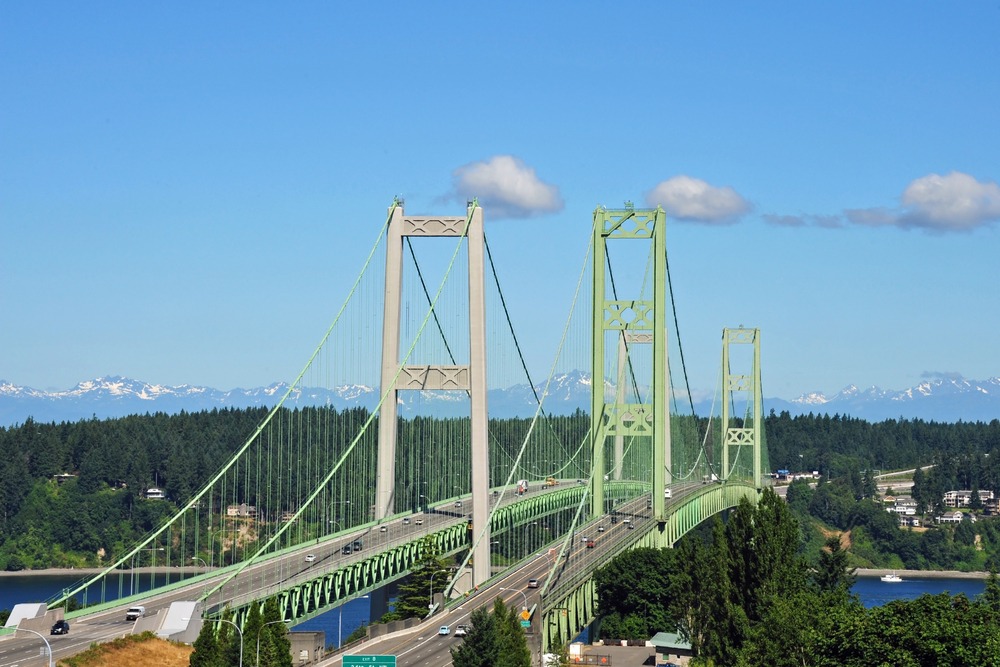
The Tacoma Narrows Bridge, spanning the Puget Sound in Washington State, has a storied history. The original bridge, nicknamed “Galloping Gertie,” collapsed in 1940 due to wind-induced oscillations. The current twin suspension bridges, completed in 1950 and 2007, stand as a testament to engineering advancements. They are an essential link for the region, offering stunning views of Mount Rainier.

The Hoover Dam Bypass Bridge, officially named the Mike O’Callaghan–Pat Tillman Memorial Bridge, is an engineering marvel spanning the Colorado River between Arizona and Nevada. Completed in 2010, it provides a dramatic vantage point of the Hoover Dam and Lake Mead. Its sleek arch design harmonizes with the rugged desert landscape.
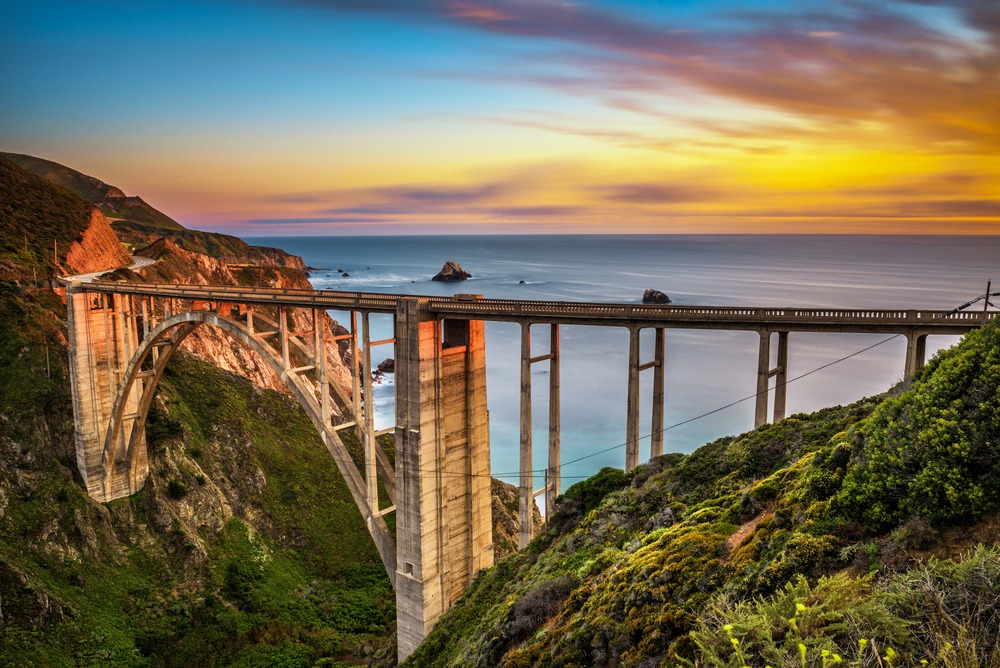
The Bixby Creek Bridge on California’s Pacific Coast Highway is a stunning concrete arch bridge completed in 1932. Nestled along Big Sur’s dramatic coastline, it offers some of the most picturesque views of the Pacific Ocean. Its graceful curves blend seamlessly with the natural beauty of the area, making it a favorite subject for photographers.

The Tappan Zee Bridge, officially the Governor Mario M. Cuomo Bridge, spans the Hudson River between Tarrytown and Nyack, New York. Opened in 2017, this replacement for the original Tappan Zee Bridge combines modern design with enhanced functionality, including dedicated paths for pedestrians and cyclists. Its sweeping views of the Hudson Valley are a highlight for travelers.
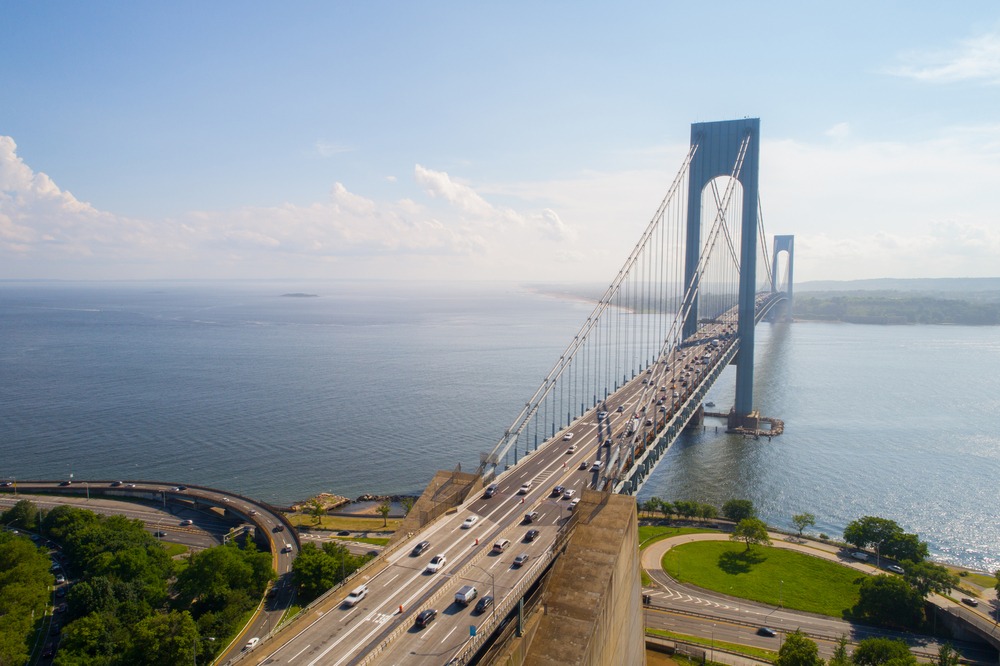
The Verrazzano-Narrows Bridge, connecting Staten Island and Brooklyn in New York City, is the gateway to the harbor. Completed in 1964, it was the longest suspension bridge in the world at the time. Its majestic towers and elegant cables remain a striking feature of the city’s skyline.
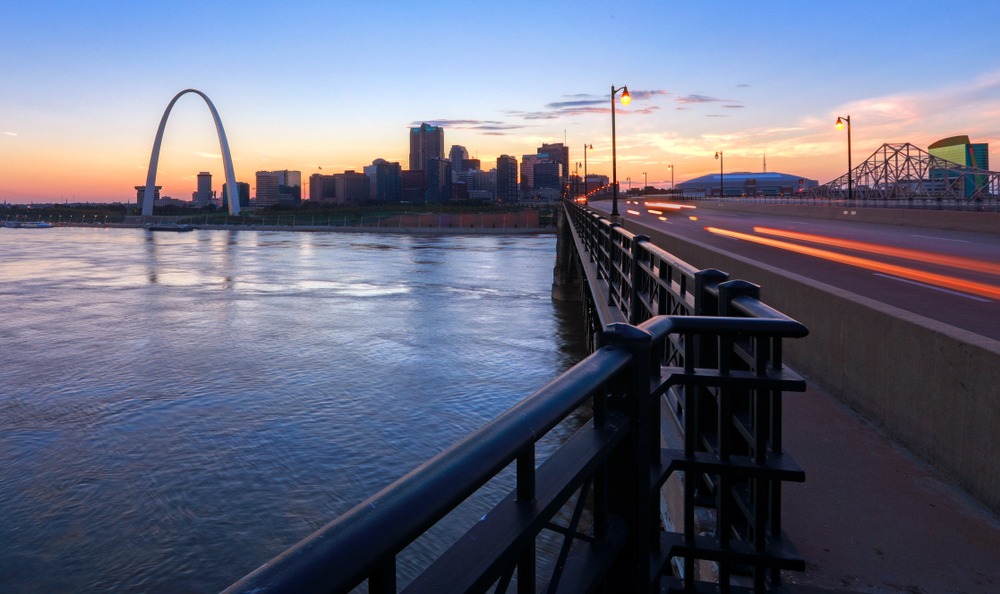
The Eads Bridge in St. Louis, Missouri, completed in 1874, was the first major bridge built using steel as its primary material. Spanning the Mississippi River, it was an engineering marvel of its era. Today, it stands as a historic landmark, framing the view of the iconic Gateway Arch.
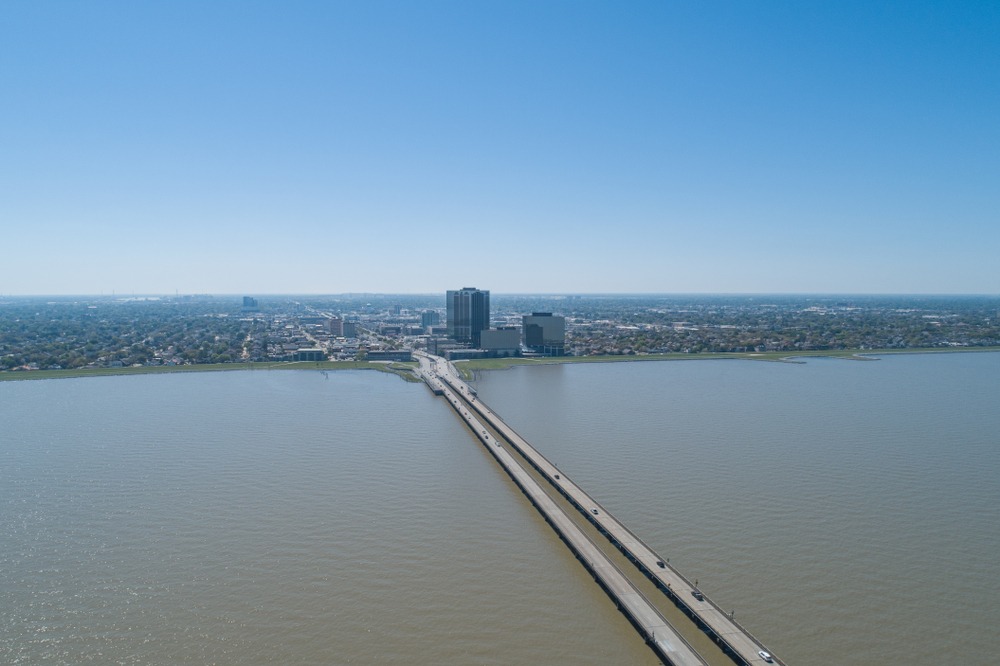
The Lake Pontchartrain Causeway in Louisiana, stretching nearly 24 miles, is the longest continuous bridge over water in the world. Built in 1956, it connects New Orleans to the northern suburbs, providing a vital link for commuters. The experience of driving across the vast expanse of Lake Pontchartrain is uniquely mesmerizing.

The Benjamin Franklin Bridge, completed in 1926, connects Philadelphia to Camden, New Jersey, across the Delaware River. Its Art Deco design and striking blue towers have made it an enduring symbol of Philadelphia. The bridge offers a pedestrian walkway, providing stunning views of the city and river.
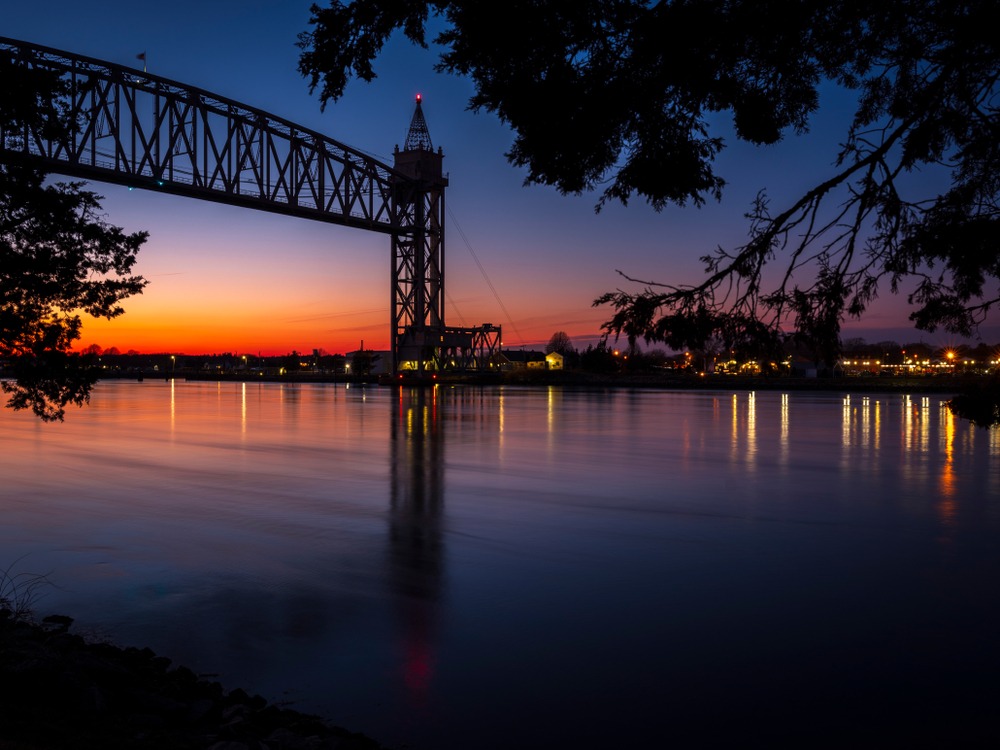
The Cape Cod Canal Railroad Bridge, completed in 1935, is a vertical lift bridge spanning the Cape Cod Canal in Massachusetts. Its industrial design contrasts with the scenic beauty of Cape Cod, and its historic significance as part of the region’s maritime infrastructure is undeniable.
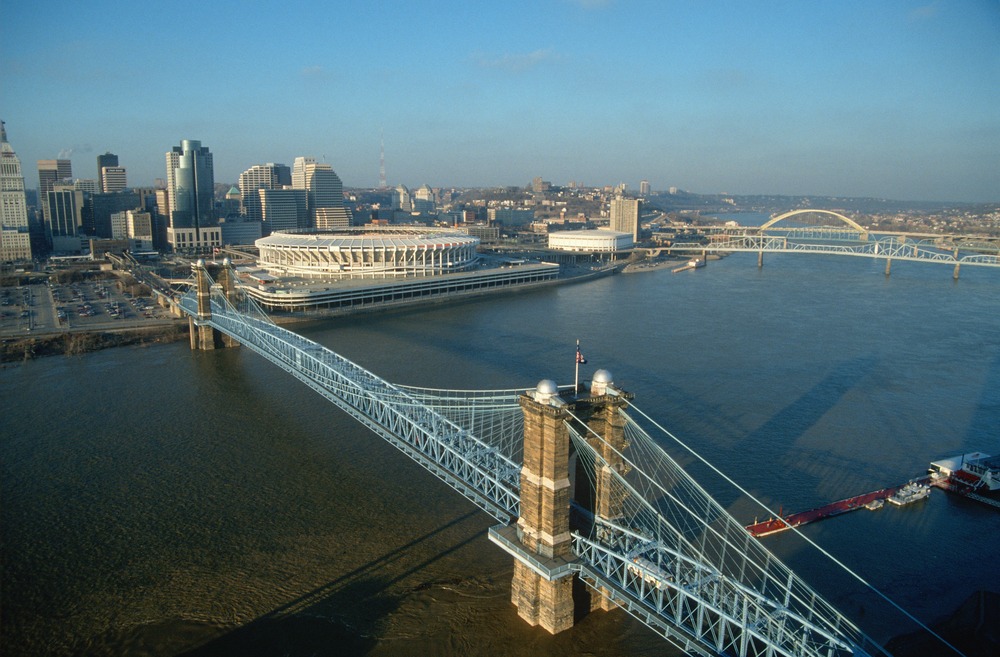
The Roebling Suspension Bridge in Cincinnati, completed in 1867, predates its famous counterpart, the Brooklyn Bridge. Spanning the Ohio River, it connects Cincinnati to Covington, Kentucky. Its striking design and historical importance make it a beloved landmark, blending engineering brilliance with architectural beauty.
These bridges, diverse in design and history, represent the United States’ commitment to innovation, functionality, and aesthetic appeal. Each one tells a unique story, bridging not just physical distances but also connecting communities and defining landscapes.


